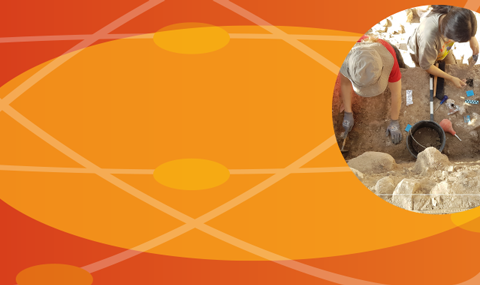
Petrous bone - diagenesis and unique properties
Often, in archaeological excavations, a wide range of fossilized bone is recovered. Usually, long shafts from the femur, fibula, tibia, ulna, and radius and other bones are present in very bad preservation. Climate and geographical context are usually the main factors that affect the state of preservation of bones. However, to better understand the diagenesis of biological material namely in bone one should not only study fossilized bone and the conditions of preservation alone but understand bone ossification and formation. Many researchers nearly for the period of a century have studied and discussed bone formation and material properties, they pointed out to major differences among different bones and related that to evolutionary adaptations and/or special tasks require adaptations. Bone is considered to be the reservoir of calcium we need, it also stores fat that could be consumed in later stages of starvation. Almost all bones in the human body undergo remodeling where based on microcracks and stress points the bone makes a secondary osteon (Haversian Canal) introducing sometimes totally new organization of collagen fibrils and canaliculi network for the sake of adaptation and better functionality. So far there is only one bone that is known to not undergo remodeling, being completely built at age of two, the petrous bone of the temporal is known to be highly calcified and brittle, yet evidence of secondary osteon is rarely present in this bone. It is referred to as the Periotic bone in some literature and quite makes the most recovered bone from archaeological finds. There is a need to investigate the mode of preservation and diagenesis of the petrous bone, as well as the structural elements and its organization. In addition to assessing degrees of calcification in this bone compared to other bones but also demonstrate the difference of calcification among the petrous bone itself as it varies. Besides understanding the collagen fibril organization and properties and the hydroxyapatite content and formation, this research will conduct thorough experiments on DNA from modern and ancient petrous bones, including qPCR and DNA imaging. All in the endeavor to pinpoint areas of interest inside the petrous for either DNA or collagen extraction. The former is a prerequisite to understanding population mixing, migration, and genetic properties and the later to help extract 14C for dating to reconstruct our past.

Plant phytoliths
Many plants produce minerals composed of silica (also known as opal). These so-called phytoliths (see image above) are known to occlude organic material inside the mineral phase, where it is relatively protected from bacterial or fungal attacks. Despite many efforts over the years, it has proven very difficult to extract this organic material from silica minerals for radiocarbon dating.
We utilized a different approach by dissolving the silica under mild conditions and then extracting the insoluble organic fraction from the phytoliths. After cleaning and graphitization, this organic material was dated. In order to determine whether the dates are reliable or not, phytoliths were tested from a sequence of layers that also contained charred seeds. The results show that the dates are accurate to within 100 years or so, but in some cases, they are identical to the ages of the charred seeds. The cases where they are identical were shown to be those samples that produced a high yield of carbon, indicating that they were composed almost entirely of cellulose. This study was published in Journal of Archaeological Science.

“High temperature” aragonite
Calcite in the form of chalk or limestone decomposes by heating to around 800°C to form calcium oxide. The calcium oxide then hydrates and finally takes up carbon dioxide to form calcite again, but now in the form of plaster or mortar. Even though this reaction sequence is probably one of the most studied chemical reactions in scientific history, and despite its known use in the production of cement and concrete, what has thus far eluded the scientific community is that during this equilibration with water and carbon dioxide, another form of calcium carbonate – called aragonite – is sometimes also produced. The aragonite often transforms into calcite, but in some cases, aragonite can be preserved for millennia in certain layers of archaeological sites.
After documenting the formation of aragonite in lab conditions and examining its preservation in some archaeological strata, we went on to address the questions of whether or not aragonite can be separated physically from the bulk of the calcite – and if so, will it retain its original radiocarbon signal? The separation required a major effort but was indeed successful, and the radiocarbon dates of the aragonite proved to be reliable. The results of this study were published in Radiocarbon.


